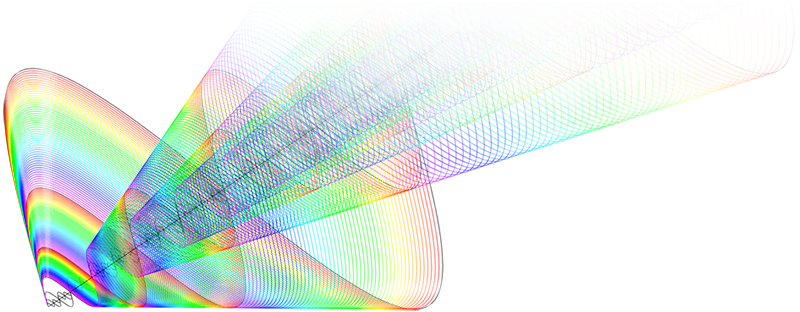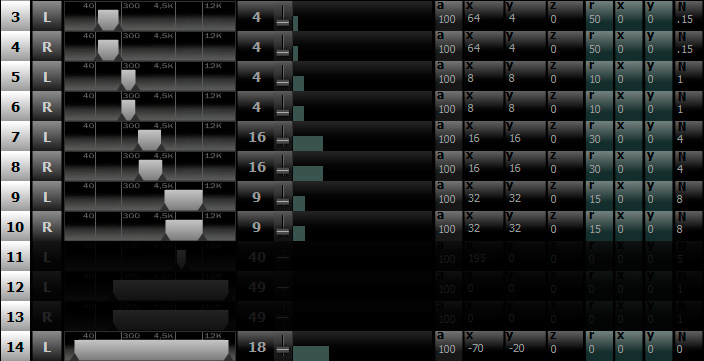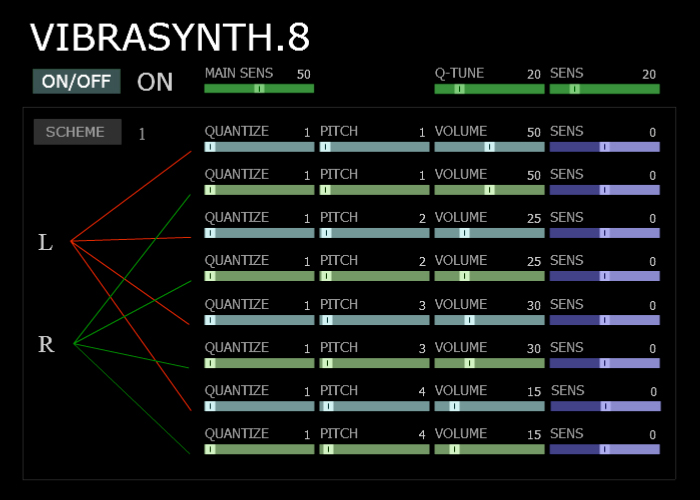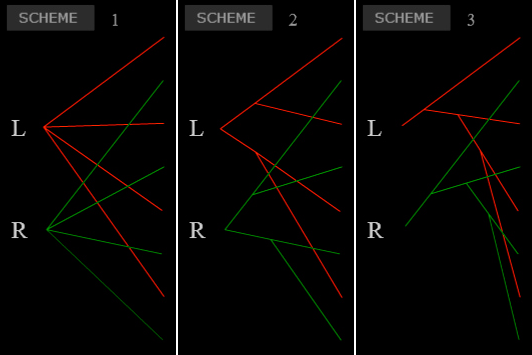Vibroresonant sound synthesis
Have you ever wondered how sound affects the stay of things in yourself?
What determines the interaction of objects?
Do you know how your neighbors hear your music?
These questions may seem strange, but they have occupied and continue to occupy inquiring minds. The nature of vibrations interested ancient philosophers and is important for modern quantum physicists, and is interested in musicians and natural scientists.

In order to expand our understanding of sound synthesis, as well as to support the practical interest of curious sound designers, I suggest that you get carried away with vibroresonant synthesis.
Unlike classical FM synthesis, which uses repetitive transformations in its source, vibroresonant synthesis uses in its basis the properties of an oscillatory medium, also participating in its formation.
For practice, I want to offer an experiment with the program VIBRASYNTH.8, based on the audio-visual platform ChaosVision .
The synthesis proposed by the program is built on 8 sensors that linearly respond to the allocated part of the spectrum of the audio signal.
Tone-shift generators mimic the effects of a pitch-shifting establishment, and the generator-binding schemes allow you to generate a semblance of resonant interactions, springing the waves into a common timbre.
If you are intrigued by the possible sound, I can offer to listen to the sound experiments I recorded a year ago that were created during the development of the first version of the VS8 program. You can also watch an experimental video.
So, to open new sound spaces, we need to install a demo version of ChaosVision 2. After installing the system, you need to unzip the archive with the VS8 routine in its main directory.
We start the program and, skipping the key entry, select VIBRASYNTH in the effects list. In the visualizer window, click the synthesizer enable button.
If you don’t hear the synthesizer working, and the program itself doesn’t react at all to the sound played by the computer, then you will have to delve into the settings of the recording sources, sound card. By the way, the characteristics of a sound card greatly affect the sensitivity and functionality of the synthesizer, but if you are seriously interested in getting to know the abstract sound of VS8, I recommend that you look at the general instructions for working with the platform.
If, nevertheless, the synthesizer buzzed in response to the reproduced sound, then we can proceed to the description of the principle of operation of the control tools.

The spectrum analyzer block in the control window of the program acts as a source of primary resonators, the resonant frequency of which is within the allocated region of the frequency spectrum of the signal.
The digital matrix sets the smoothness of the offset, the range of deviation and the volume of the generator. Parameter N expands the dynamics of tonal deviation similarly to an increase in the sensitivity of the sensor.

The window of the adjustment unit allows you to adjust the parameters of the generators, contains the controls for the overall adjustment of the tone and the button for switching the springing schemes of several waves.

The unusual functionality of the VS8 program is capable of generating saturated ultra-low-frequency tones, coloring the timbre with asymmetric vibrations and load-bearing components.
The synthesizer can imitate various natural noises, animal sounds, not to mention the possibility of generating many electronic sounds.
Do not forget that in addition to the mastery of synthesis control, the signal source itself, its dynamic and frequency characteristics, play an important role!
What determines the interaction of objects?
Do you know how your neighbors hear your music?
These questions may seem strange, but they have occupied and continue to occupy inquiring minds. The nature of vibrations interested ancient philosophers and is important for modern quantum physicists, and is interested in musicians and natural scientists.

In order to expand our understanding of sound synthesis, as well as to support the practical interest of curious sound designers, I suggest that you get carried away with vibroresonant synthesis.
Unlike classical FM synthesis, which uses repetitive transformations in its source, vibroresonant synthesis uses in its basis the properties of an oscillatory medium, also participating in its formation.
For practice, I want to offer an experiment with the program VIBRASYNTH.8, based on the audio-visual platform ChaosVision .
The synthesis proposed by the program is built on 8 sensors that linearly respond to the allocated part of the spectrum of the audio signal.
Tone-shift generators mimic the effects of a pitch-shifting establishment, and the generator-binding schemes allow you to generate a semblance of resonant interactions, springing the waves into a common timbre.
If you are intrigued by the possible sound, I can offer to listen to the sound experiments I recorded a year ago that were created during the development of the first version of the VS8 program. You can also watch an experimental video.
So, to open new sound spaces, we need to install a demo version of ChaosVision 2. After installing the system, you need to unzip the archive with the VS8 routine in its main directory.
We start the program and, skipping the key entry, select VIBRASYNTH in the effects list. In the visualizer window, click the synthesizer enable button.
If you don’t hear the synthesizer working, and the program itself doesn’t react at all to the sound played by the computer, then you will have to delve into the settings of the recording sources, sound card. By the way, the characteristics of a sound card greatly affect the sensitivity and functionality of the synthesizer, but if you are seriously interested in getting to know the abstract sound of VS8, I recommend that you look at the general instructions for working with the platform.
If, nevertheless, the synthesizer buzzed in response to the reproduced sound, then we can proceed to the description of the principle of operation of the control tools.

The spectrum analyzer block in the control window of the program acts as a source of primary resonators, the resonant frequency of which is within the allocated region of the frequency spectrum of the signal.
The digital matrix sets the smoothness of the offset, the range of deviation and the volume of the generator. Parameter N expands the dynamics of tonal deviation similarly to an increase in the sensitivity of the sensor.

The window of the adjustment unit allows you to adjust the parameters of the generators, contains the controls for the overall adjustment of the tone and the button for switching the springing schemes of several waves.

The unusual functionality of the VS8 program is capable of generating saturated ultra-low-frequency tones, coloring the timbre with asymmetric vibrations and load-bearing components.
The synthesizer can imitate various natural noises, animal sounds, not to mention the possibility of generating many electronic sounds.
Do not forget that in addition to the mastery of synthesis control, the signal source itself, its dynamic and frequency characteristics, play an important role!
